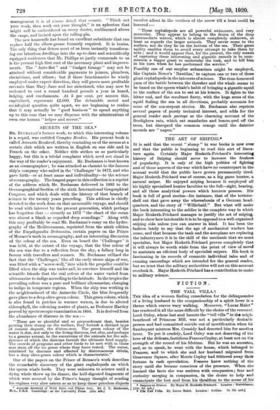THE ART OF SNIPING.*
IT is said that the recent " slump " in war books is now over and that the public is beginning to read this sort of litera- ture again. Certainly Major Hesketh-Pricharil's interesting history of Sniping .should serve to increase the freshest of popularity. It is only of the high politics of fighting and of those aspects of the war which have no counterpart in the normal world that the public have grown permanently tired. Major Hesketh-Prichard was.of course, as a big game hunter, a natural sniper. He enjoyed sniping because it employed all his highly specialised hunter faculties to the full—sight, hearing, and all those analytical powers which hunters possess. His book is full of good stories—for instance, that of the tortoise- shell cat that gave away the whereabouts of a German head- quarters, and the story of " Williebald." But what will make the book interesting to the soldier is the complete way in which Major Hesketh-Prichard manages to justify the art of sniping, and to show how intolerable it is to be opposed to a well-organised sniping side unless you can answer in kind. It has been the fashion lately to say that the age of mechanical warfare has come, and that because the tank and the aeroplane are replacing the infantrymen it is in the skill of the mechanic that we must specialise, but Major Hesketh-Prichard proves completely that it will always be worth while from the point of view of moral to maintain an efficient body of specialist snipers. His book is fascinating in its records of romantic individual tales and of cunning camouflage which are intended for the general reader, but we trust that the military authorities will not on this account overlook it. Major Hesketh-Prichard has a contribution to make to military science.






































 Previous page
Previous page